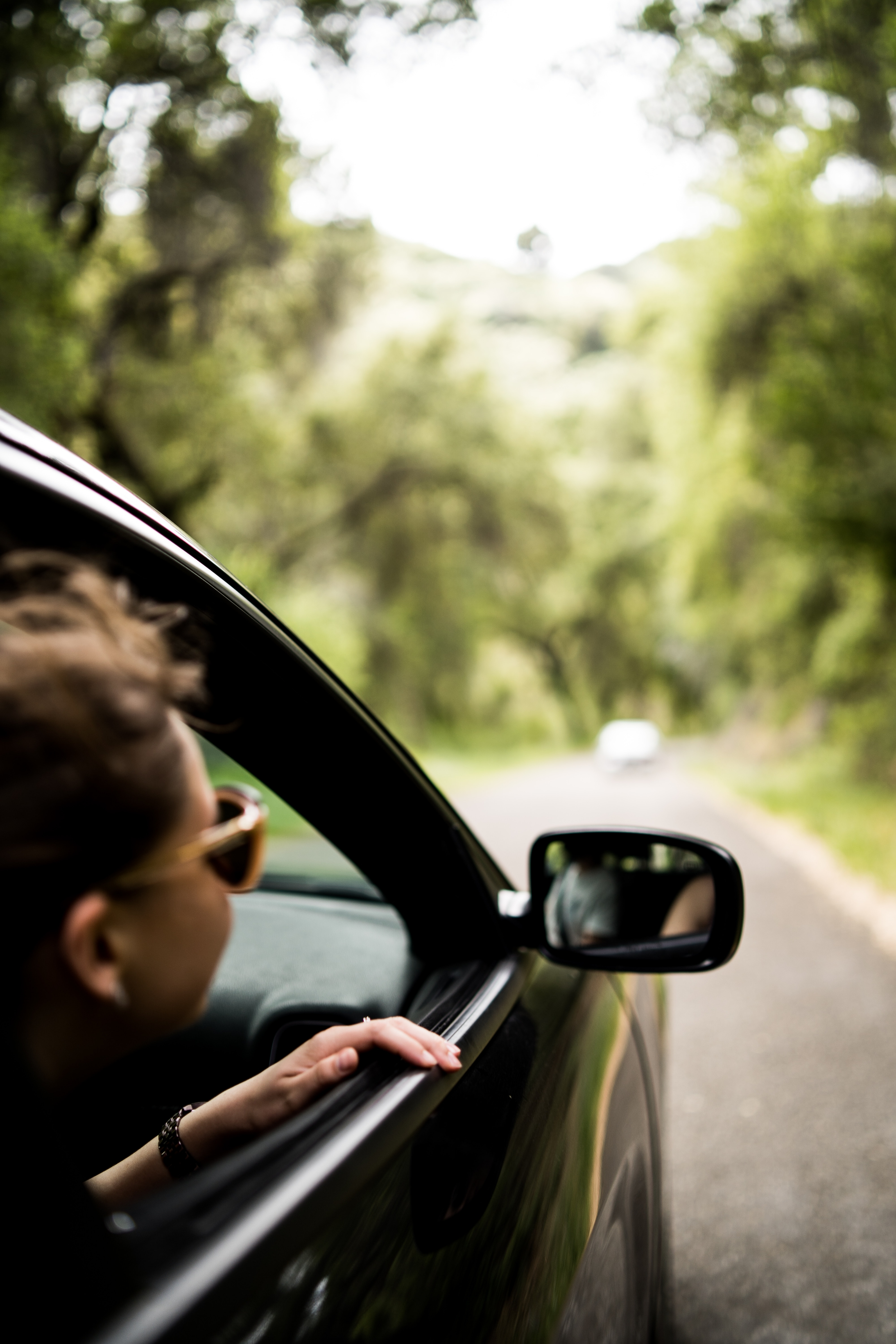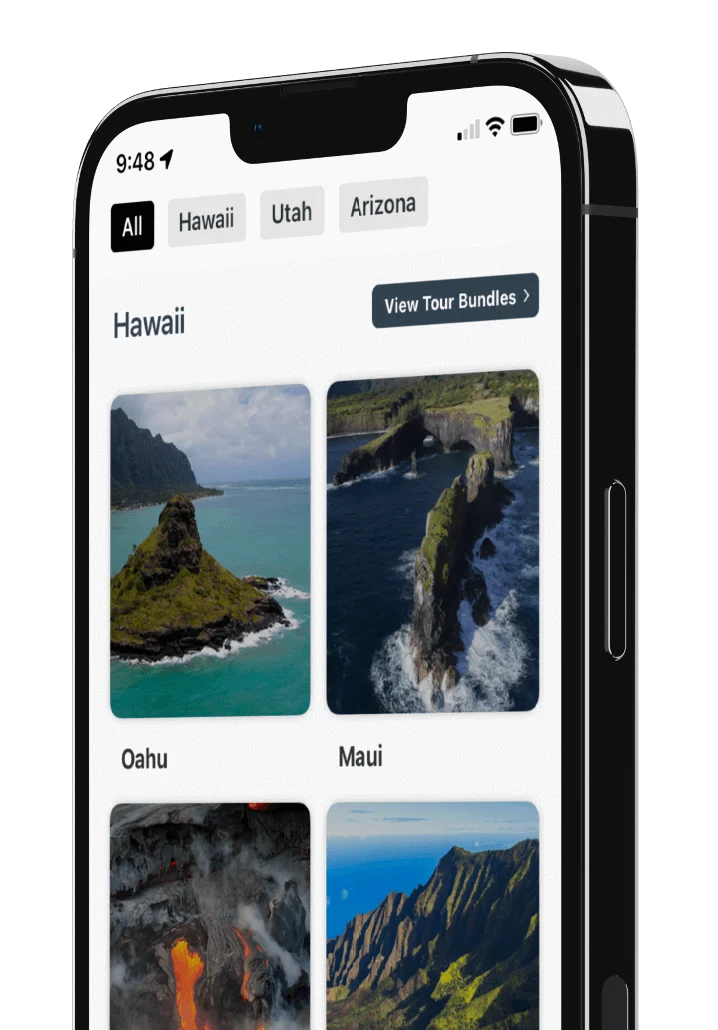
The Ultimate Capitol Reef National Park Travel Guide

Capitol Reef is the second largest National Park in Utah at over 240,000 acres. It sits squarely between Arches and Canyonlands National Parks to the east, and Bryce Canyon and Zion parks to the west. Although it receives fewer visitors than its sister parks, Capitol Reef has just as much to offer if you’re willing to look.
The park was created to protect The Waterpocket Fold, a nearly 100-mile long wrinkle in the Earth’s crust. Looking at the 19 different layers of exposed rock in the Waterpocket Fold is like looking back 250 million years into our planet’s history.
Regions of Captiol Reef National Park
Capitol Reef is roughly divided into 3 different regions:
- Historic Fruita & the Scenic Drive
- North District, including Cathedral Valley
- South District or Waterpocket District
Shaka Guide’s Capitol Reef Tour explores the central region, including the historic village of Fruita and the Scenic Drive. On your own, you can explore the northern district which includes Cathedral Valley, or the southern district which includes the famous Burr Trail. Anywhere you go, you’ll encounter fantastic geological formations, stunning views, and hiking trails.
Getting to Capitol Reef National Park
 by Kamchatka
by Kamchatka
The Capitol Reef Visitor Center is found in Wayne County, between the towns of Torrey and Hanksville on Utah State Route 24. If you’re coming from the east, routes 24 and 95 both lead into Hanksville. Coming from the west, route 24 and Scenic ByWay 12 will bring you into Torrey.
The nearest international airports to Capitol Reef National Park are:
- Salt Lake City International Airport, UT: 3.5 hour drive
- McCarran International Airport, Las Vegas, NV: 5 hour drive
The nearest regional airports to Capitol Reef National Park are:
- Grand Junction Regional Airport, CO: 2.5 hour drive
- Canyonlands Regional Airport, Moab, UT: 2 hour drive
Driving distances to Capitol Reef from nearby cities and points of interest:
- Moab, UT to Capitol Reef National Park: 2 hours
- St. George, UT to Capitol Reef National Park: 3.5 hours
- Salt Lake City, UT to Capitol Reef National Park: 3.5 hours
- Provo, UT to Capitol Reef National Park: 3 hours
- Beaver, UT to Capitol Reef National Park: 2 hours
- Bryce Canyon National Park, UT to Capitol Reef National Park: 2.5 hours
- Canyonlands National Park, UT to Capitol Reef National Park: 2 hours
- Lake Powell, UT to Capitol Reef National Park: 6 hours
- Goblin Valley State Park, UT to Capitol Reef National Park: 1 hour
- Anasazi State Park Museum, UT to Capitol Reef National Park: 1 hour
Where to Stay Near Capitol Reef National Park
 by Darrensp by Getty Images
by Darrensp by Getty Images
Torrey
If you’re staying in Torrey, you’ll be spoiled for choice when it comes to hotels. It also offers some camping and RV parks. Torrey has the added benefit of being only about 15 minutes from the Capitol Reef Visitor Center. And, Torrey is an international dark sky town so views of the night sky are just as good from in town as they are from the park. If you plan to stay in Capitol Reef National Park at the Fruita Campground, be aware it requires reservations March through October and it does fill up regularly. This is the coziest of the campgrounds: each of the 71 sites comes with a picnic table and fire pit or grill. There is also a restroom with flushing toilets, potable water stations and RV dump stations. Fruita campsites cost $20 a night. Below are additional accommodations you’ll find in and around Torrey.
Hotels
- Capitol Reef Resort (hotel, teepees, conestoga wagons)
- The Rim Rock Inn & Restaurants
- Motel Torrey
- Torrey Schoolhouse B&B Inn
- Red Sands Hotel
- Cougar Ridge Resort
- Skyridge Inn B&B
- Austin’s Chuck Wagon Motel
- Noor Hotel of Capitol Reef (Best Budget)
Camping & RV
Hanksville
Hanksville, about 40 minutes from the park visitor center, has fewer lodging options than Torrey but that also means it’s less crowded.
Hotels
Camping & RV
Other Places to Stay Near Capitol Reef
Campsites, both public and private, are scattered throughout the Capitol Reef Area. Public land primitive camp sites are first come, first served. Primitive means these sites come with nothing at all except for a fire pit. Currently, the only hotel in between Torrey and Hanksville is Cathedral Valley Inn, located in Caineville along route 24.
When is the Best Time to Visit Capitol Reef National Park?
Capitol Reef National Park is open 24 hours a day, 365 days a year. That said, not all services are always available, and not all areas of the park are always accessible. Most of Capitol Reef is backcountry, which means that in times of heavy snow or rainfall, roads may become impassable. Even in the summer, excessive heat and drought can lead to sandy conditions, impeding the most capable of drivers and vehicles.
Spring in Capitol Reef National Park
 by Michiej Bledowski
by Michiej Bledowski
This is the most popular time of year for hiking in Capitol Reef. March sees the highest number of backpackers compared to any other month—and for good reason because the weather is perfect. Average temperatures in March are in the mid-50s, just right for staying cool on long hikes. This also begins the time of year when reservations are required to stay in the Fruita campground. April warms up into the mid-60s and May the mid-70s.
In spring, the crowds descend and parking lots fill up fast. Capitol Gorge and Grand Wash trailheads are often full by 10am. Get there early and be flexible. If a trailhead is full, try again later. Due to the increased demand for accommodations, this is also the most expensive time to visit Capitol Reef. Maybe the best reason to visit in the spring is to see the lovely fruit orchards in bloom. Check the national park website to find out when trees will be in bloom.
Summer in Capitol Reef National Park
 by Kamachtka
by Kamachtka
Capitol Reef embraces its desert climate in the summer as temperatures soar into the 90s. Still, if you drink enough water, wear a hat and sunglasses, and bring enough sunscreen, you can have a great and safe time. Late May through mid-August is when the Ripple Rock Nature Center is open. The nature center has all kinds of activities for kids like pioneer games, identifying fossils and rock layers, and making cornmeal on a prehistoric grinding stone. Even when the nature center is closed, kids can sign up at the Visitor Center for the Junior Ranger program.
Summer also starts the harvest season in the Fruita orchards. Cherries and apricots ripen first, followed by peaches and pears in August. Picking ripe fruit in open orchards is free but if you want to take any with you, you’ll need to pay a small fee.
Be sure to keep an eye on the sky and check with the visitor center frequently because summer is Monsoon season at Capitol Reef. Flash floods are a real danger in the area and can lead to road closures. If you see rain clouds in the sky, think twice before entering any canyons. If it’s raining, do not enter canyons. And remember, just because it isn’t raining where you are doesn’t mean flash floods can’t still happen.
Beginning in late-May, Ranger-led programs ramp up. There’s a daily 30-minute geology program in the afternoon. Evening programs vary by subject and starting time. There are also guided hikes, star talks (Capitol Reef is an international dark sky park), full moon walks, and more.
Fall in Capitol Reef National Park
 by CampPhoto from Getty Images Signature
by CampPhoto from Getty Images Signature
Fall may be the best time of year to visit Capitol Reef. You can pick ripe apples from the Orchard, the heavy rains are done for the year, and so are the high temperatures. The crowds have returned but with a little planning, you can avoid the worst of it. Travel on weekdays instead of weekends and arrive early or stay late. Cohab Canyon is a great hike this time of year to see the fall foliage in Fruita. The ranger programs, like the star talks and guided hikes, last through October. Fall also sees the Annual Heritage Starfest usually in late September or early October. This event features guest speakers, stargazing, and telescope viewing.
Winter in Capitol Reef National Park
 by Kamachtka
by Kamachtka
If you’re visiting in winter, you’ll definitely avoid the crowds. Some say the park is even more beautiful in winter. Average daily temperatures don’t usually dip below freezing even in the coldest months, so hiking is still a popular activity. Nights can get pretty cold, though, so if you plan to do any backpacking, remember to pack layers! Heavy snowfalls are rare and won’t usually cause any road closures.
RELATED: Weather in Capitol Reef National Park - When's the Best Time to Visit?
Things to Do in Capitol Reef National Park
1. Shaka Guide Driving Tour

There are 3 driving tours inside the park. The first, the Scenic Drive, is a 7.9 mile long paved road starting in Fruita and traveling south along the Waterpocket Fold. The Scenic Drive connects to 2 unpaved spur roads that allow you to explore Grand Wash and Capitol Gorge canyons. This is the most popular driving tour as it’s rated for 2-wheel-drive. This is also where your Shaka Guide tour of Capitol Reef will take you, pointing out all the must-know features and stories. A few key stops along this tour are Chimney Rock, Cassidy Arch, The Pioneer Register, ancient Petroglyphs, and Capitol Dome. This tour should take you around 4-6 hours to complete but you could easily spend 2-3 days exploring and hiking the park.
RELATED: Shaka Guide's Capitol Reef National Park Tour Itinerary
2. Road Trips
Aside from the Scenic Drive, there are additional road trips in the park. North of Fruita, you can take the Cathedral Loop, a 96-mile route through the beautiful and remote Cathedral Valley. The Waterpocket fold opens up into broad desert and presents you with views of massive stone features and barren landscapes. The tour can be completed in about 6 hours but we recommend setting aside an entire day.
To the south, you can “loop the fold” following Notom Road and Burr Trail. Even longer than the Cathedral Valley loop, looping the fold is a 124 mile journey that can be completed in as little as four hours without stopping. But if you have the time, I highly recommend stopping often for photos and hiking.
Pickup a road guide from the visitor center for both the Cathedral Loop and Looping the Fold in order to make the most of your time—and so you don’t get lost. Remember, these are unpaved roads in very remote areas with little or no cell service. In the backcountry, you are responsible for your own safety and you may have to self-rescue.
If you don’t have or don’t want to rent an appropriate vehicle for the backcountry, there are several tour companies in the area that provide Jeep tours of the park. Hanksville Tours and Backcountry Safaris are only 2 of the many tour companies near Capitol Reef.
3. Historic Fruita
 by AutumnSkyPhotography
by AutumnSkyPhotography
Historic Fruita is the heart of Capitol Reef and the site of the Visitor Center, campground, and much more. There, you can walk the orchards, planted over a hundred years ago, and pick fruit when in season. The park has 2 shaded picnic areas with restrooms and running water just a short way from the Visitor Center. Below that, you can visit the Gifford Homestead and Museum where you can learn about life in Historic Fruita and purchase some local goodies, like homemade fruit pies. Finally, there’s the Fruita campground with 71 sites and room for RVs and group camping. Inside the campground is an amphitheatre where park rangers hold activities and lessons, free of charge.
The Visitor Center includes park exhibits, a bookshop, a small movie theater to watch a film about the park, and a ranger desk where you can apply for permits and ask all your questions.
Running right through the middle of Fruita is the Fremont River, named for John Fremont, the famed Pathfinder of the west. Fruita also boasts several hiking trails, such as the Fremont River trail, Sulphur Creek, and Cohab Canyon which has terrific views overlooking Fruita.
4. Hiking Trails
There are 15 day hikes in Capitol Reef, more than enough to keep you occupied for several days. The four easiest hikes are recommended on the audio tour but all 15 are worth checking out if you have the time and energy. For a complete list, check out the highlights in the tour app. Here are a few of our favorites:
Hickman Bridge is a moderate 2 mile round trip hike with views of 2 natural arches: the 133-foot Hickman Natural Bridge and the smaller Nels Johnson Natural Bridge. This hike can be extended by taking the Rim Overlook and Navajo Knobs trail offshoots—but that will add 14 miles and nearly 3000-feet of elevation gain, so make sure you’re physically able and carry plenty of water.
Cassidy Arch is a strenuous 3.5 mile hike that takes you to Cassidy Arch, a natural arch named for Butch Cassidy who used to hide out from the law nearby.
Capitol Gorge to The Tanks is less than 2.5 miles roundtrip but takes you to where you can see ancient petroglyphs carved into the canyon walls; the Pioneer Register where pioneers and settlers carved their names as they passed through; and The Tanks, giant water pockets in the sandstone that collect rainwater.
There are many more hikes that offer terrific views of individual canyons or the Waterpocket Fold as a whole, so make sure to get out and explore!
RELATED: Capitol Reef National Park Hiking Guide
5. Backpacking Trails
If you want to get out into the backcountry and spend a few days on the trails, Capitol Reef and Shaka Guide have you covered. Check out the highlights in the app or read all about the hiking and backpacking options in the park on our website. The area attracts beginners and experts alike. Free backpacking permits are required and can be obtained at the Visitor Center.
Halls Creek Narrows is probably the most famous and challenging of the Capitol Reef backcountry routes. A 22.4-mile rugged and mostly unmarked trail, the hike requires wading and sometimes swimming in water. It follows the Halls Creek drainage system at the southern end of the park and offers incredible views of canyon walls. The trail is also not maintained so obstacles can change periodically due to flash floods, rock falls, and more. It can get blisteringly hot in the summer so wear appropriate clothes and drink plenty of water. It’s recommended to do this as a 3-4 day excursion.
If you want even more of a challenge, try Burro Wash, Cottonwood Wash, and Sheets Gulch slot canyons. Warning - these are for experienced canyon-country hikers only. The slot canyons get narrow and at times need to be traversed sideways. There is also standing water and the potential for short swims.
For something a little easier, try hiking the Pleasant Creek. From the trailhead on Pleasant Creek Road you can hike to both the east and west park boundaries. You can do sections of this as a day hike or there are primitive campsites if you want to conquer the whole thing.
6. Rock Climbing & Bouldering
Rock climbing and bouldering are experiencing a growth in popularity in and around the park. There are strict regulations in place as to where and how you can climb but the park does present some unique challenges for enthusiasts. As with overnight backpacking and canyoneering, permits are required and can be obtained at the visitor center or online at nps.gov/care.
7. Canyoneering
 by Peter-Evans from Getty Images
by Peter-Evans from Getty Images
Canyoneering is a popular way to explore canyons using a variety of methods like walking, climbing, rappelling, swimming, and more. The many canyons in Capitol Reef country bring canyoneers from miles away. The most popular, and most challenging slot canyon in the park has to be the aptly named Pandora’s Box Slot Canyon. Like its mythical namesake, the canyon tempts many to open its secrets but unleashes troubles and obstacles. This is a technically challenging and lengthy excursion, not for the faint of heart. But for anyone who’s overcome the canyon, they’ll say the views and experience were worth it.
8. Biking
Split the difference between walking and driving by completing one or all of Capitol Reef’s 4 biking tours. This is a great option for the eco-friendly tourists who truly wish to Leave No Trace. Bikes are restricted to the same roads as cars except for the trail between the Visitor Center and the campground. For more information about Capitol Reef bike tours, visit nps.gov/care.
9. Backcountry Horseback Riding
 by Sweetmommy from Getty images
by Sweetmommy from Getty images
If you want the real pioneer experience, why not traverse Capitol Reef on horseback? Horses and pack animals are allowed on trails in the park, with a few exceptions. If you don’t have your own horse, several companies in the area offer rentals and tours. Just be sure to abide by the park regulations concerning pack animals.
10. OHVs & ATVs
While UTVs and ATVs are illegal in national park boundaries, just a few miles east of Capitol Reef lies Swing Arm City and Factory Butte recreation areas. Swing Arm City is a choice destination for off-road enthusiasts where you’ll find 8,000 acres of land maintained by the Bureau of Land Management specifically designed for OHVs. The terrain is great for everyone, from beginners to extreme adrenaline junkies.
What to Eat Near Capitol Reef National Park
Exploring sure does work up an appetite! If you find yourself in need of sustenance, you’ve got options. Restaurants are as close as 12 minutes west of the Visitor Center on route 12. In Torrey, you’ve got burgers, BBQ, pizza, Mexican, and more. Some of our favorites are Capitol Reef Inn & Cafe, Slackers, and Rim Rock Patio. If you find yourself closer to Hanksville when you’re hankering for something to eat, fret not! Hanksville also has burgers, BBQ, pizza, and Mexican (I’m sensing a theme here…). There are only 3 restaurants and 3 convenience stores in Hanksville, but we tried them all and liked them all! If you’re a fan of John Wayne, definitely check out Duke’s Slickrock Grill where the Duke himself will greet you from behind the bar. If you’re somewhere in the middle, near Caineville, try stopping at Mesa Farm Market for some local organic grub.
Budgeting
If you’re on a budget, visiting the park during the winter will save you the most money. Some restaurants, accommodations, and tour companies don’t operate in winter so your options will be limited. But, there’s something magical about seeing Capitol Reef all covered in snow, having it all to yourself, or both! If you’d rather not explore Capitol Reef wrapped in a parka and scarves, stick to the shoulder seasons of spring and fall. During summer, hotel and tour rates go up for the summer vacation crowds.
While on the tour, the only things you need to budget for are food, souvenirs, and the Scenic Drive fee. Of course, you should also take into consideration any supplies you may need to purchase before starting the tour, like sunscreen, water bottles, and fuel.
- $20 per car for the Scenic Drive
- $15-$20 per person for Lunch
- $5 per personal size pie at the Gifford Home
- $10-$20 per person for gifts/souvenirs at the Gifford Home and Visitor Center
Activity Costs
|
Approximate Capitol Reef National Park Activity Costs |
|||||
|
Backcountry Jeep Tours (typical tours last 2-4 hours) |
per person |
$200 |
Canyoneering |
per person |
$125-$300 |
|
Horseback Riding (1-2 hours excursions) |
per person |
$100 |
Backpacking (excursions last anywhere from 8 hours to 5 days/4 nights) |
per person |
$50-$1000 |
|
Guided Llama Hikes (hikes last anywhere from 1 hour to overnight) |
per person |
$100-$600 |
Backcountry Jeep & ATV Rentals (rental periods and restricted areas affect the price) |
per rental |
$100-$250 |
Lodging Costs
Your lodging costs will be determined by what kind of lodging you’re looking for. Camping will be the cheapest, running anywhere from free public land campsites to about $35 a night for tent camping. RV camping sites typically run $40 - $60 a night. If you’re looking to stay in a hotel, budget lodgings start at around $75 - $80 a night. But if you’re looking to spend some money on your trip, a night at the luxurious Cougar Ridge Resort in Torrey will cost you $400 a night. There are also airbnb rentals available that vary in price from $120 - $500 per night, including one rental home that was built into a cave!
Transportation Costs
Most visitors to Capitol Reef will be driving. If driving your own vehicle, your only cost will be fuel. Utah’s gas prices tend to be about $0.50 cents above the national average. If you’re renting a vehicle, your costs will depend on which company you go with but expect to spend at least $30 a day on a rental. You can also explore Capitol Reef on a Jeep or ATV tour. These tours typically cost at least $200 or more, depending which areas of the park you want to see. If you’d rather explore the park by pack animal such as a horse or llama, those experiences start out around $90 per person and go up to as much as $600 or more.
Capitol Reef National Park FAQ's
What is the Capitol Reef National Park's Elevation?
Capitol Reef National Park sits at around 5,000 feet of elevation, but there is quite a bit of variation: it ranges from 8,960 ft at its highest to 3,880 at its lowest. Unless you plan to hike the higher elevation trails, most people do just fine at the elevation around Fruita and the Scenic Drive.
Is there service and wifi in the park?
Cell phone service at the park is generally limited to the area around the Visitor Center. Once you get down into the Scenic Drive, and especially in the northern and southern districts, there is no cell service. Limited wifi is also available at the Visitor Center but doesn’t extend out into the parking lot very far.
Where can I find water in the park?
When visiting Capitol Reef anytime of the year, it’s important to always think about water. If you’re hiking, carry enough water for the journey. Be aware of water bottle refill stations in the park. You can find them at the Visitor Center, Picnic area parking lot, Gifford Home, and the Campground. If backpacking, carry a water filtration system so you can safely drink from creeks and water pockets.
Anything else I need to know?
Flash floods are a real risk and can occur almost without warning. If you see rain clouds, think twice before entering any canyon. If it’s raining, do not enter any canyon. Remember, flash floods can still occur even if it isn’t raining where you are.
Conclusion
Planning a successful trip to Capitol Reef takes only a few moments but reaps huge benefits. Whether you’re there to learn, explore, or relax, Capitol Reef National Park has something to offer everyone. Just remember to drink water and remain flexible. Have backup plans if the weather doesn’t cooperate or it gets more crowded than anticipated. There’s always something you can see or do at Capitol Reef!
Ready to explore Capitol Reef National Park? Check out our Capitol Reef National Park Tour! You'll get turn-by-turn directions to hikes, overlooks and more.





















